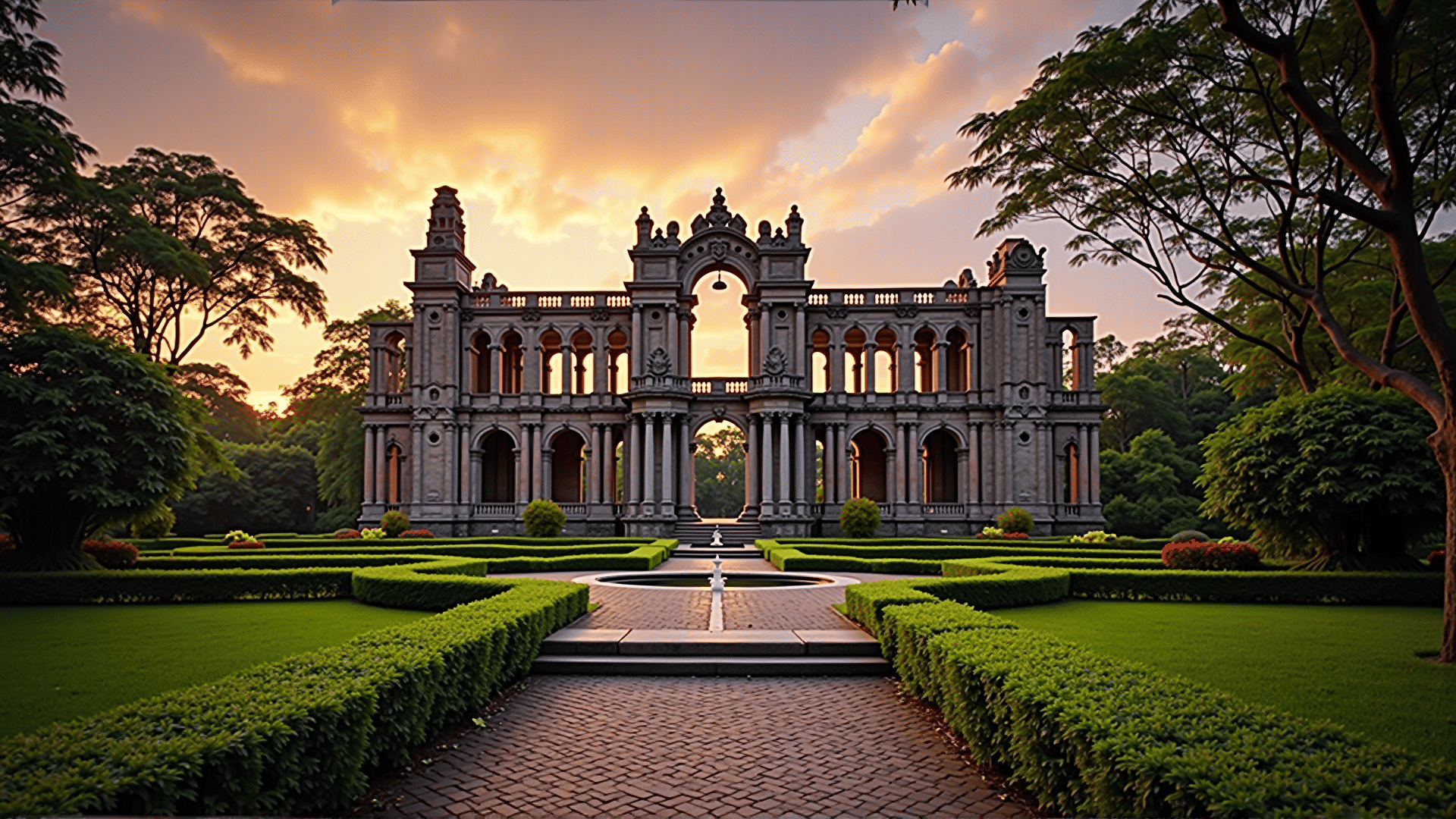Nestled in the lush landscapes of Talisay City in the Philippines lies an architectural vestige that whispers tales of love and loss — The Ruins. Often referred to as Talisay’s Taj Mahal, this skeletal frame of a once-grand mansion embodies a timeless narrative that captures the hearts of its visitors.
Constructed in the early 1900s by Don Mariano Ledesma Lacson, The Ruins was originally built in memory of his beloved wife, Maria Braga, who tragically passed away due to childbirth complications. The mansion was designed with a neoclassical approach, showcasing elegant lines and grand columns that highlighted its luxurious heritage. Far from being a mere structure, it stood as a symbol of Don Mariano’s enduring love and devotion.
The mansion’s once-splendid interiors are now open to the sky, allowing sunlight to play upon the aged stone and the surrounding gardens. The façade, though stripped of its former grandeur, retains a majestic aura that continues to inspire awe and reverence. Walking through The Ruins, visitors can almost picture the opulent lifestyle that took place within its walls during its heyday.
However, this beautiful relic tells a tale that is as tragic as it is romantic. During World War II, the mansion was set ablaze to prevent Japanese forces from using it as a headquarters. The fire lasted for days, devouring the wooden interiors but leaving the reinforced concrete structure intact — a testament to its robust construction and enduring legacy.
Today, The Ruins stands as a popular historical site, with its silhouette particularly enchanting when set against the vibrant hues of the setting sun. It attracts tourists and locals alike, drawn by its rich history and the sweeping views of the surrounding sugarcane fields. Resting amidst beautifully manicured gardens, it serves as the perfect backdrop for reflecting on the past and appreciating the enduring power of love.
Through its weathered columns and timeworn façade, The Ruins tells the poignant story of a love that transcended tragedy, held fast in the enduring embrace of stone and memory.
